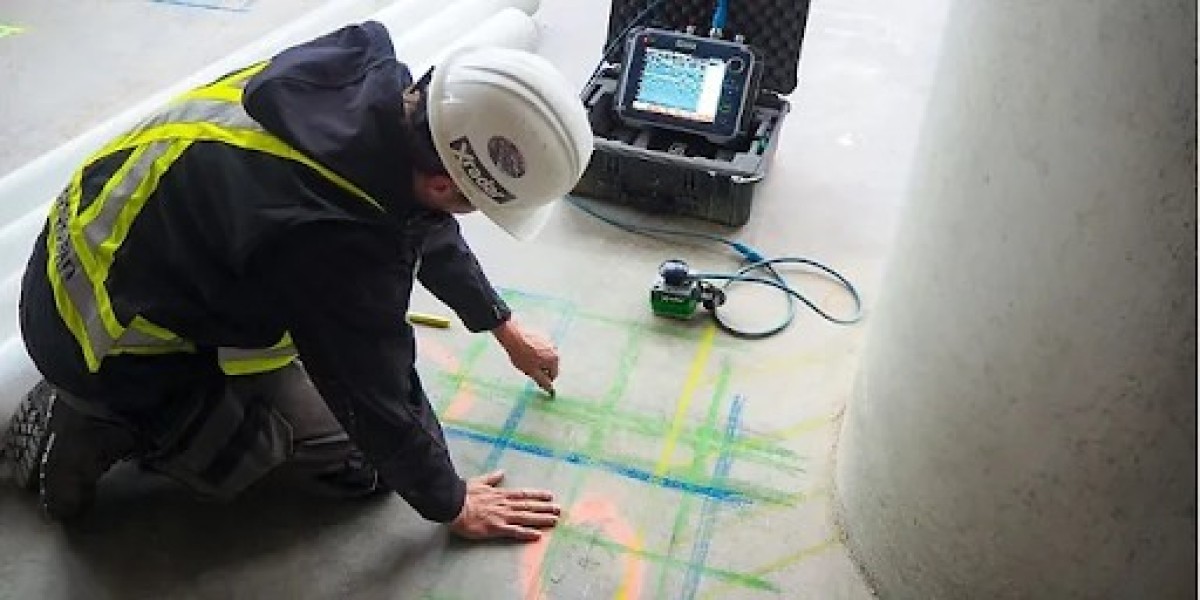Concrete, the foundation of modern construction, is renowned for its durability and strength. However, when it comes to understanding what lies beneath its surface, it can be quite an enigma. This is where Ground Penetrating Radar (GPR) and private utility locating services step in, offering a remarkable solution for revealing the hidden world beneath our feet.
What is Concrete Scanning GPR?
Ground Penetrating Radar (GPR) is a non-destructive geophysical method used to inspect the sub-surface of various materials, including concrete. It operates on the principle of electromagnetic wave propagation, allowing it to capture high-resolution images of objects and anomalies within the concrete structure. In essence, GPR acts as a sort of "X-ray vision" for concrete, enabling us to peer beneath the surface without causing any harm.
The Need for Concrete Scanning
Concrete scanning GPR plays a pivotal role in various industries, especially in construction and engineering. The primary reasons for its utilization are:
Safety: Before commencing any drilling, coring, or cutting activities, it is essential to ensure there are no hidden obstacles or utility lines within the concrete. Concrete scanning minimizes the risk of accidents, utility damage, and associated liabilities.
Cost-Efficiency: Accurate mapping of rebar, post-tension cables, and other embedded objects allows for precise and efficient project planning. This helps avoid costly mistakes and rework.
Compliance: Regulatory and safety standards often mandate concrete scanning in construction projects, ensuring compliance and minimizing legal liabilities.
Preservation: In renovation or historical restoration projects, concrete scanning with GPR helps preserve the structural integrity of the building by identifying critical elements.
Private Utility Locating Services
In many cases, the need for Concrete scanning GPR extends beyond structural concerns. Private Utility Locating Services are a critical component of this process. These services specialize in identifying and mapping hidden utility lines such as electrical cables, water pipes, and communication lines beneath the concrete. Private utility locating services employ advanced GPR technology alongside electromagnetic locators to ensure the utmost precision.
The GPR Process
Concrete scanning GPR involves several steps:
Survey Preparation: The GPR technician identifies the target area and makes necessary preparations, including surface cleaning and marking the scanning zone.
GPR Equipment Setup: The GPR device is configured for the specific requirements of the survey. This may involve adjusting the frequency and antenna size.
Data Collection: The GPR technician scans the concrete surface by systematically moving the GPR device across the area of interest. The system sends electromagnetic pulses into the concrete, which bounce back with information on subsurface anomalies.
Data Interpretation: The collected data is processed and interpreted, generating images that reveal the presence and location of embedded objects, voids, or utilities.
Reporting: A comprehensive report is created, detailing the findings and providing recommendations for further actions. This information is invaluable for project planning and risk assessment.
Benefits of GPR Concrete Scanning
Concrete scanning GPR offers a plethora of benefits:
Non-Destructive: No harm is inflicted on the concrete structure, making it a safe and environmentally friendly approach.
Speed and Efficiency: GPR scanning is swift and efficient, enabling real-time data collection and immediate results.
Accuracy: The technology provides high-precision data, reducing the chances of human error and ensuring reliable results.
Versatility: GPR can be used in a wide range of environments, from construction sites to historical buildings.
Cost Savings: Identifying hidden objects and utilities reduces the risk of costly accidents and project delays.
Conclusion
Concrete scanning GPR and private utility locating services are indispensable tools in modern construction and renovation projects. They offer a non-destructive means to explore the hidden world beneath our feet, ensuring safety, compliance, cost-efficiency, and preservation. Whether you're embarking on a construction endeavor or curious about the integrity of your concrete structures, these technologies are your invaluable partners in uncovering the secrets beneath the surface, making construction safer, more efficient, and better for the environment. Embracing GPR and private utility locating services is the first step in truly understanding what lies beneath.








